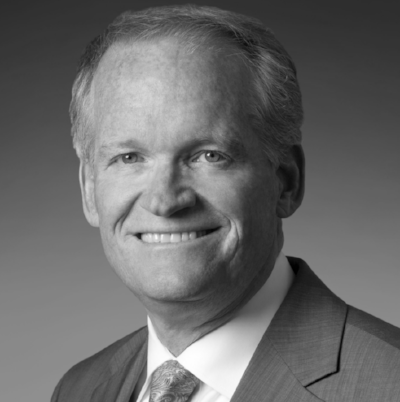James Lee Sorenson, Chairman, Sorenson Impact Foundation

Please give us a bit of background on yourself and your role in the impact investing space.
I’ve always been a businessman and entrepreneur. Just prior to my formal involvement in the social innovation and impact investing space, I helped develop digital video compression software, mass-market videophones, and video relay service for deaf and hard-of-hearing individuals. This work helped transform communication capabilities for a million deaf individuals in the early 2000s, and I realized that my investments could ‘do well while doing good.’ I like to think that I haven’t looked back since.
In 2005, through Unitus’s for-profit spin-off, Unitus Equity Fund (UEF), I made my first formal impact investment into SKS Microfinance Ltd. (now called Bharat Financial Inclusion Ltd.), an Indian company providing financial services to the poor. In 2009, SKS went public with a multi-billion dollar market capitalization. This further entrenched my belief that investors do not have to choose between returns and impact.
In 2012, through the Sorenson Impact Foundation, I began focusing on program-related investments (PRIs) into high-impact, early-stage social enterprises with business models capable of reaching underserved populations at scale, which I still actively pursue today.
However, I soon realized that I was also passionate about building the nascent field of social impact. In 2013, I endowed the Sorenson Impact Center at the University of Utah’s David Eccles School of Business. The Center’s mission is to marshal capital for social good, empower data-driven programs, break down silos across sectors, and equip the next generation of leaders with social purpose.
Today, my passion continues to be investing in opportunities that combine innovative and worthwhile ideas with talented management teams to produce growing new enterprises, working with these innovative enterprises work to help foster and scale their reach and the reach of others.
How well are companies adapting to the mainstreaming of purpose-driven finance? What ways is impact investing making headway, and where is it lagging?
I think a day is coming when a social value proposition is behind the investment decisions of small and large investors alike, a day when social impact—in many sectors—will be measured and tracked right alongside a financial return. I am optimistic that an increasing number of people will be onboard to solve some of the world’s most intractable problems with innovative, scalable and self-sustaining solutions. We’re not there yet, but I'm encouraged.
In order for the impact investment market to reach its potential, the ecosystem will need to be built out. The ecosystem is still in its relatively early stage—it’s fragmented, inefficient, and largely comprised of niche players. The big players, such as pension funds and other institutional investors, are less active impact investors and must be engaged. A move toward more established track records, larger deal sizes and lower due diligence costs will no doubt attract larger, more sophisticated investors over time.
Clearing another barrier—the lack of familiarity and education around (or biases against) unfamiliar investment products by consultants, lawyers, and advisers to investors—will take time, field-building, and patience. That is one reason that I endowed the Sorenson Impact Center: to invest in education and knowledge around the evolving space of social impact. I think the number of people who support the evaluation of goals other than financial performance is increasing, especially as Millennials begin to take the helm.
Furthermore, a clear need exists for accepted, explicit, and standardized reporting metrics for impact measurement. The adoption of a standardized system for measuring and reporting social and environmental impact will spur the field forward at a faster clip—and it’s currently making slow progress.
What opportunities do you see for the future of purpose-driven finance?
For all the barriers and constraints, there are promising new developments and key actions that will help overcome and propel impact investing into the mainstream of future investors, such as:
New fund strategies. New fund strategies that align large scale investor interest with double bottom line objectives are forming and gaining traction. Two good examples are TriLinc Global, which is focused on trade finance to the BoP and Equilibrium Capital, a series of planned funds projected to be in excess of $3 billion under management focusing on sustainable real assets and renewable energy.
Aligning public and private players. There are great developments and new innovation for aligning private investors with public payers in the procurement of social services such as Pay for Success or Social Impact Bonds in such issue areas as criminal justice, workforce development, homelessness, pre-K education, and health care to name a few.
Government Policy. Government policy can play a huge role in helping to move mainstream investors into impact investing. The “Investing in Opportunity Act,” which was a part of the recent tax reform package, is a great example. It creates an incentive for investors to invest in distressed communities, or “Opportunity Zones,” across the U.S. by allowing a deferral of long-term capital gains, as well as a modest step up in basis for investors who invest in these zones, which are designated by state governors.
Young leaders. Whether as a social entrepreneur, an impact investor, or even a government employee, young people can get involved. University programs are popping up around the U.S. and abroad to help educate students about impact investing. In fact, the Sorenson Impact Center just convened nearly 30 social impact centers and initiatives housed at universities from around the globe at the 2018 Winter Innovation Summit, held at the University of Utah campus.
With the social impact space gaining such traction and attracting some of the best upcoming minds, I can’t help but to recall what my father, a celebrated entrepreneur and philanthropist, loved to say: “The best is yet to come.”